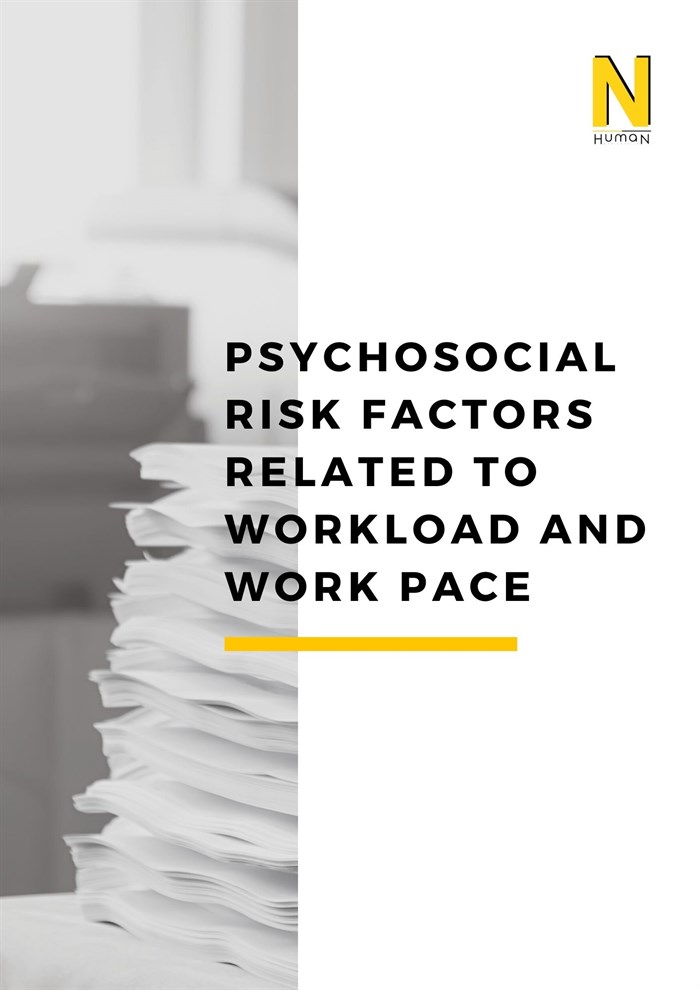Psychosocial Risk Factors Related to Workload and Work Pace
Psychosocial risks and work-related stress are the most difficult ones in the field of occupational health and safety; It is one of the issues that significantly affect individuals, organizations, and national economies. Workload, which is one of many risk factors, is defined as the amount of work given to and expected from an employee in a given period. Workload and pace of work continue to be one of the main factors that determine both productivity and staff turnover.
Psychosocial risks and work-related stress are the most difficult ones in the field of occupational health and safety; It is one of the issues that significantly affect individuals, organizations, and national economies. Workload, which is one of many risk factors, is defined as the amount of work given to and expected from an employee in a given period. Workload and pace of work continue to be one of the main factors that determine both productivity and staff turnover.
Low workload causes boredom of the employee and negatively affects the performance and career goals of the employees in their fields. High workload brings with it health-related problems, job dissatisfaction, and leaving the job.
The workload is mainly classified as mental and physical workload; Here, the mental workload is largely found among management workers, while the physical workload is largely found among those who do physical work. However, this distinction does not contain clear boundaries; physical and mental workloads may overlap each other in certain contexts.
Workload and work pace risks related to the content of the job consist of risk factors related to the job duties of individuals. Work content-based factors that may pose a risk to workload and work pace include:
• Monotony
• Inconsistent job descriptions
• The need to be constantly on the alert
• High-quality requirements
• Information overload
• Frequent interruptions
• Unreasonably high responsibility
• Frequent interactions with difficult customers
Workload and pace of work risks associated with the way work is organized, are risk factors associated with how work and work tasks are planned, distributed to employees, and managed. Work organization-based factors that may pose a risk to workload and pace of work include:
• Very high or very low workloads
• Unreasonably frequent deadlines
• Irregular working hours such as shift work, night work, or being on permanent duty
• Excessive work-related travel outside of working hours or lack of a fixed workplace
• Inappropriate work equipment or working conditions
• Unclear job descriptions, goals, and responsibilities, or an unclear distribution of responsibilities
In addition to the workload and work pace risks associated with work content and organization, there are also workload risk factors associated with social interactions that can have a negative impact on employee health:
• Having to work alone
• Social or physical isolation
• Inefficient teamwork or interaction
• Poor communication
• Lack of support from a manager or working colleagues
• Harassment or other ill-treatment in the workplace
• Inequality and discrimination.
In addition, potential psychosocial risks related to workload; may also include physical, chemical, or biological factors and high accident risks. Psychosocial risks related to workload and work tempo are summarized under the following headings in the ISO 45003:2021 guide:
• overload or underload
• high time pressure
• being constantly subject to deadlines
• machine tempo
• high level of repetitive work
Conclusion
Psychosocial risks based on workload and work tempo differ in each job description. For this reason, employers carry out studies to determine all psychosocial workload risks in their workplaces. A comprehensive and systematic risk assessment helps the employer determine what measures are necessary.
N_HumaN Consulting provides services to businesses within the scope of the five-stage İYRS® model to identify, evaluate and manage psychosocial risks that may occur due to workload and work pace.

References
ISO. (2021). Retrieved March 21, 2022, from https://www.iso.org/obp/ui/#iso:std:iso:45003:ed-1:v1:en
Psychosocial risks and stress at work. OSHA. (n.d.). Retrieved March 18, 2022,from https://osha.europa.eu/en/themes/psychosocial-risks-and-stress
Publications of the Osh Administration in ... - etusivu. (n.d.). Retrieved March 22, 2022, from https://www.tyosuojelu.fi/documents/95118/2556216/Psychosocial_workload/d3bb836e-02a8-ec0f-bce9-1ec57e9cf2cb
Tyosuojelu Englanti - Työsuojelu. Psychosocial workload factors. (n.d.). Retrieved March 21, 2022, from https://www.tyosuojelu.fi/web/en/working-conditions/psychosocial-workload/factors
D, R. (2018). Negative impacts of heavy workload: A comparative study among sanitary workers. Sociology International Journal, 2(6). https://doi.org/10.15406/sij.2018.02.00086
Lee, R. T., & Ashforth, B. E. (1996). A meta-analytic examination of the correlates of the three dimensions of Job Burnout. Journal of Applied Psychology, 81(2), 123–133. https://doi.org/10.1037/0021-9010.81.2.123